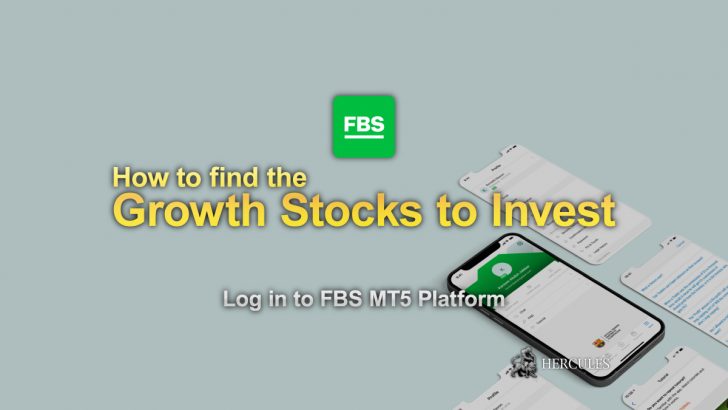Learn how to find the growth stocks to invest


Reasons why we trade stocks
There are many reasons why you might want to trade stocks. First, it is their long-term predictability: holding that most stocks will continue to rise in the long run. You might say, ‘but many of them fail too’ – it’s quite natural to think so. That’s why FBS offers you stock options that are mostly decades-old giants like Coca-Cola, modern-day giants like Amazon, or promising high-tech companies like Tesla. In other words, any stock you find on FBS is worth considering.
How to find the list of Stocks for trading?
On the FBS website, go to Trading, click Stocks, and you will get a complete list with all the specifications.
In MT5 (remember that you are not trading stocks on MT4 – only on MT5 ), right-click on Market Watch, click Symbols, and select Stocks.
In FBS Trader, which is probably the easiest option, you can simply open the app and go to the Stocks section.

How to trade stocks?
Technically, you can use all the techniques you use to trade currencies and commodities, in stocks. Meanwhile, stocks are best suited for medium and long term trading according to the reasons explained in the article “Why trade stocks” (read if you missed it). Therefore, if you are tired of day trading and want to have a living and keep operating in the market at the same time – stocks might be your best choice.
How to choose growth stock?
What you should be looking for is a company that is expected to generate consistent profits in the future that is observable and growing faster than the industry itself on average. A local company or a champion in the industry. That is called growth stock. How do I find it?
Fundamentals and trends. Check the stock performance of the last few years. Don’t focus too much on fluctuations – they are all volatile. Look at the trend. If a stock has been following an uptrend over the past 24 months, it is a good candidate. Be wary of ‘rocket launchers’ like Tesla’s (unless they have really great fundamentals): often, after expanding like a black hole over a very dense period of time, the stock can face the possibility of losing steam and cooling off quickly. Next, dig into company earnings, reports, and news. Read some predictions. Does it look optimistic and strong? Do observers believe the company has a bright perspective for the next few years? What about the medium term outlook: Does the company tend to make good sales and perform better than expected? Have they done it? If the answer is ‘yes’ to most of these questions, it looks like you’ve found a decent stock.
Example of growth stocks
So you choose a stock that is relatively stable in an uptrend and has good fundamentals – that’s your guide to finding growth stocks.
For example, there’s Apple below. After descending in early 2020, it recovered, continued to cross upwards, and has been stable on the track ever since. Pay attention to the slopes: they remain relatively stable. That’s good: it means the stock is following a balanced growth path. This is what you want. What about the fundamentals? Recent solid earnings reports, ambitious expansion plans into electric vehicle manufacturing and the utilization of new market sectors are good sales projections – and look good.
Another example is – Coca-Cola. They are more affected by the virus than Apple. They have not recovered to pre-virus highs of $60. But look at the course of recovery: they fall into the equilateral channel. That is, they grow in balance. On the fundamentals side, they have proven to be a very formidable business. In the fourth quarter of 2020, they performed quite impressively and exceeded expectations. Several attractive acquisition prospects in the future on a medium-term basis have added to the promising prospects by Coca-Cola. Then, what does this mean? It is worth paying attention to – especially from a technical perspective to profit from buying at the lows on the chart.

Now that you’ve picked a stock, you’re probably thinking, ‘How is it really the tradition’. If “How to trade stocks” isn’t clear either, here’s an easier guideline: just buy one stock and hold it for one month. Set Stop Loss at -2%, and Take Profit at 5%. From experience, if you have chosen well, most likely in about four weeks, your Take Profit will be executed successfully.









